HTC Surround Review: A Pocket Boombox
by Brian Klug on November 13, 2010 2:01 AM EST- Posted in
- Smartphones
- Windows Phone 7
- HTC Surround
- Mobile
There’s been a lot of discussion about the storage medium being used on the various WP7 devices. Like the HTC HD7 and Samsung Focus, the HTC Surround also relies on an internal microSD card for storage. My curiosity about the location of that internal microSD card ultimately led me to partially disassemble an HTC Surround.
There are 9 screws to remove from the Surround before you can get to the two PCBs inside, and with it, the microSD card. Four of the screws are tiny phillips heads, the remaining 5 are Torx T-5 screws. Two of the Torx screws are marked with void stickers that must be perforated to unscrew the screws, so be warned. Disassembly is relatively easy though.
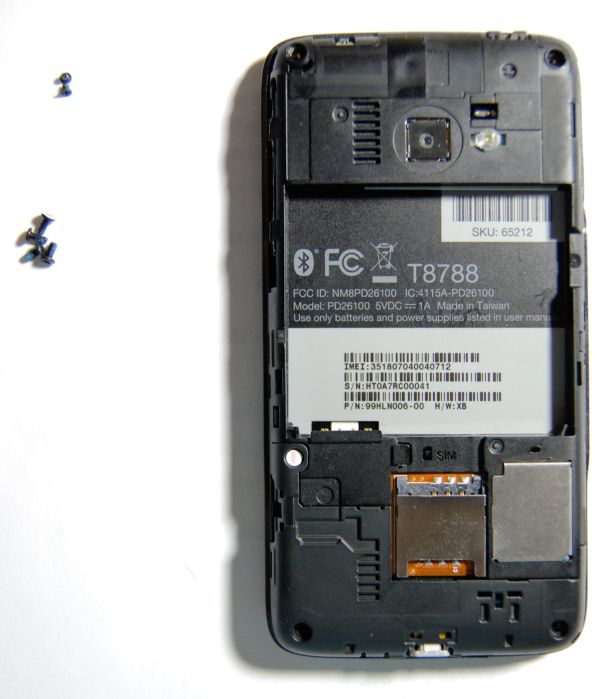
Yeah, there are only 6 screws pictured here - one more T-5 on the back in white with VOID written on it, two phillips on the side.
The four phillips screws come out of the sides of the Surround, the Torx are all on the back side. There are three Torx screws holding the bottom piece of plastic in place, which comes off first with some gentle prying. The top part pries off easily after, exposing the two-PCB design of the Surround, and the microSD card slot. It’s under that piece of conductive tape.
Peel it up, and there’s a standard push click-to-release microSD slot. Inside is a 16 GB SandDisk class 4 microSD card. I didn’t have any larger cards laying around, and I’m not sure why you’d go to an 8 GB card unless it was faster, but the usual procedure applies - you lose your data, but after a reset get the card and onboard storage in JBOD.
There's been a bit of confusion about to what extent Microsoft supports users upgrading storage on their own with a microSD card of their choice. There's a Microsoft knowledge base document now posted about it, but the state of affairs still remains confusing. The long and short of it is that only certain microSD cards meet the requisite performance requirements to be considered compatible with WP7. SD card class refers solely to sequential write performance (the class number refers directly to the speed in MB/s), but says nothing about that all-important 4K random read/write speed. Because WP7 uses onboard flash and the storage card in a JBOD, it's possible that after you fill up the internal NAND and start writing on the microSD part of the storage space, some applications will feel fast, others slow. Interestingly, the card in the HTC Surround is just a class 4 16 GB SanDisk.
The other interesting thing is that cards initialized on WP7 are locked to a specific device, and moreover, stop being recognized on the desktop - perhaps permanently. I took the card out of the Surround and spent considerable time trying to make it format, first on Windows, then OSX, and finally linux by trying to write zeros and random data to the disk using dd. This failed, as I only managed to get 'medium not present' errors every step of the way - in fdisk, gparted, every trick I know for really nuking storage. If you decide to upgrade your WP7 device, just be warned that it's probably one-way for your card.
I didn’t go any further with the Surround’s disassembly, but it’s apparent that the SIM card slot and microSD card slot sit atop an EMI shield. Underneath that may well lie the SoC and baseband. There’s also clearly a pigtail running from the board at the bottom up to the top, along with connections from the PCBs to the plastic shields.
The reason I didn’t hesitate to take this HTC Surround apart is that, honestly, it didn’t work properly. If you’ve been paying attention thus far, you’ve noticed I have two HTC Surrounds in some photos. The reason isn’t that I required two for testing (though that would certainly speed things up), it was that the original device I was given wouldn’t connect to the marketplace, instead constantly giving me an activation error and requiring entry of some six long codes. I later learned this device was improperly flashed or provisioned during manufacturing, and got another one which worked - just in time for our launch piece. Interestingly enough, the replacement device and this device show identical versions of everything in about:
The replacement Surround I’ve been using has worked perfectly thus far, but interestingly enough, performance changed subtly.


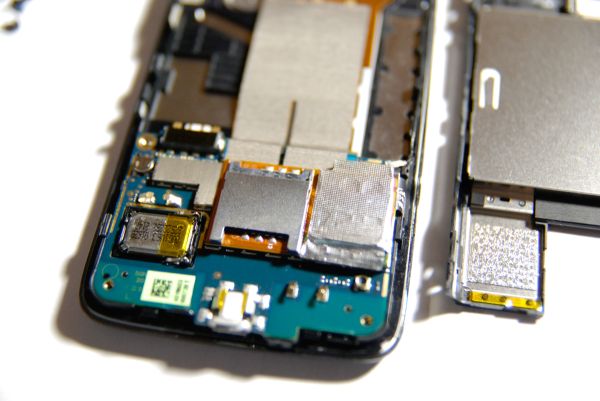
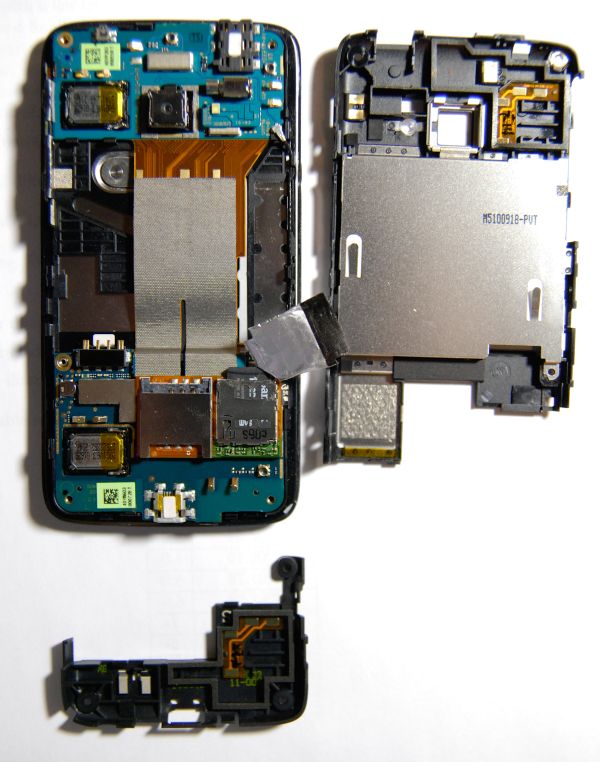
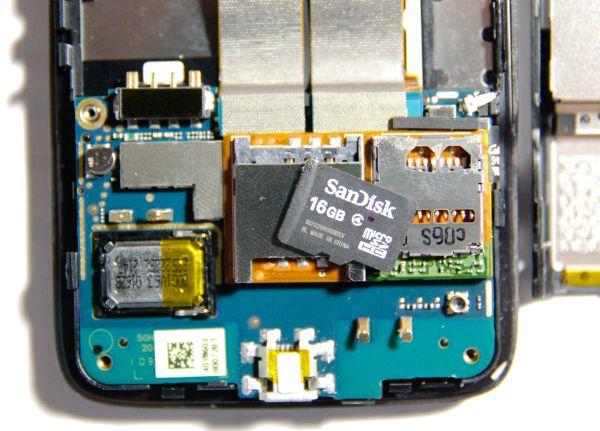
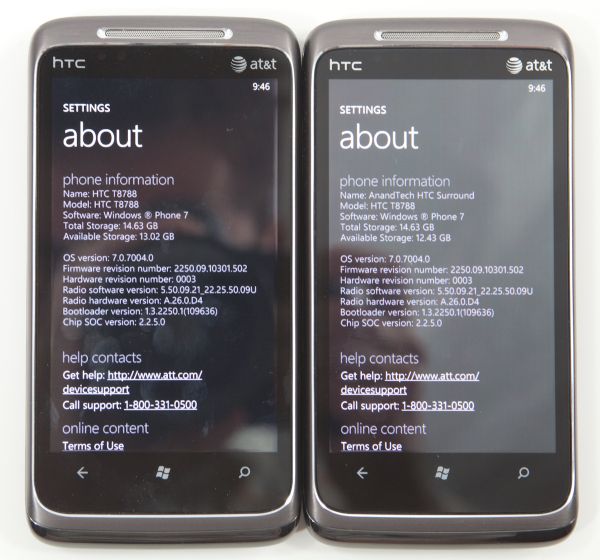








39 Comments
View All Comments
KayDat - Saturday, November 13, 2010 - link
Would have been interesting if HTC could implement a keyboard/speaker combo. Slide one way for speaker, other way for keyboard. That way, you wouldn't add thickness just for speakers.bpt8056 - Saturday, November 13, 2010 - link
I like your idea about the speaker/keyboard combo. In addition to that, better landscape support would make this phone a much more competing product.vol7ron - Sunday, November 14, 2010 - link
I love the fact that speakers/sound quality are now being considered by manufacturers. I wish the kickstand was on it, so the screen was higher.I'm curious how big the speakers are - I also would not be too sure that the part would be durable enough to withstand a slide out keyboard/speaker combo.
Randomblame - Saturday, November 13, 2010 - link
if only it ran windows mobile 6.5 and that slide out was a keyboard. That would be the updated rhodium aka touch pro 3 I would buy.Snotling - Saturday, November 13, 2010 - link
come on now... win mobile? What else Windows XP forever? Do you Miss Pentium CPUs? Still playing Starcraft 1?aebiv - Monday, November 15, 2010 - link
No, some of us aren't wow'd by the fact with WP7 you LOSE functionality vs WM6.5.Quit being a tool.
Nataku - Monday, November 15, 2010 - link
well... legacy is a blessing and a curse, thats all that can be said for winmo6.5...im actually glad win phone 7 gets a fresh start, at least nothing to drag it's feet
a12e - Saturday, November 13, 2010 - link
only has 8 GB of integrated NAND, I believe, not 16.softdrinkviking - Saturday, November 13, 2010 - link
i can't find that mistake. on pg 2, it says 512MB of integrated NAND, and a 16GB microSD card.a12e - Saturday, November 13, 2010 - link
In the spec comparison table at the bottom of the first page for the Samsung Focus.I wish it had 16GB... then I'd have an extra 8GB right now. :)